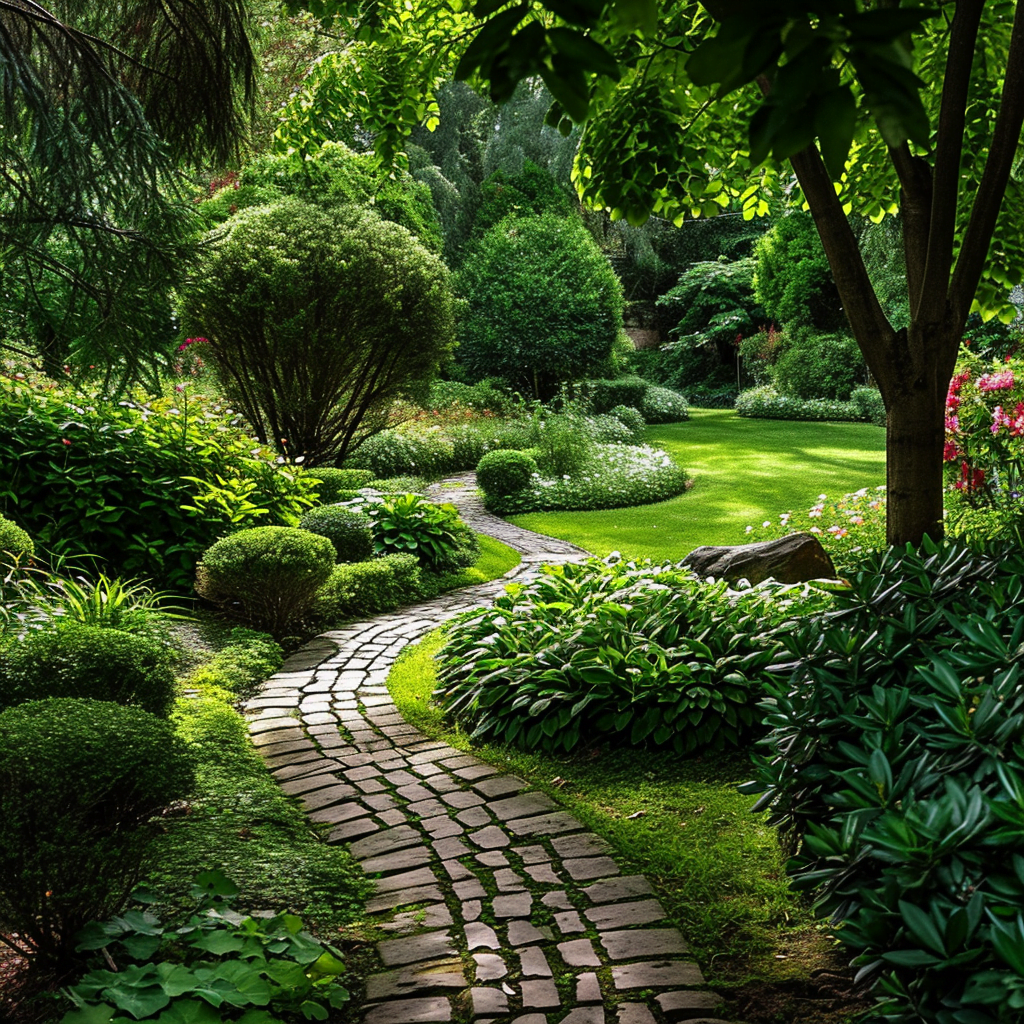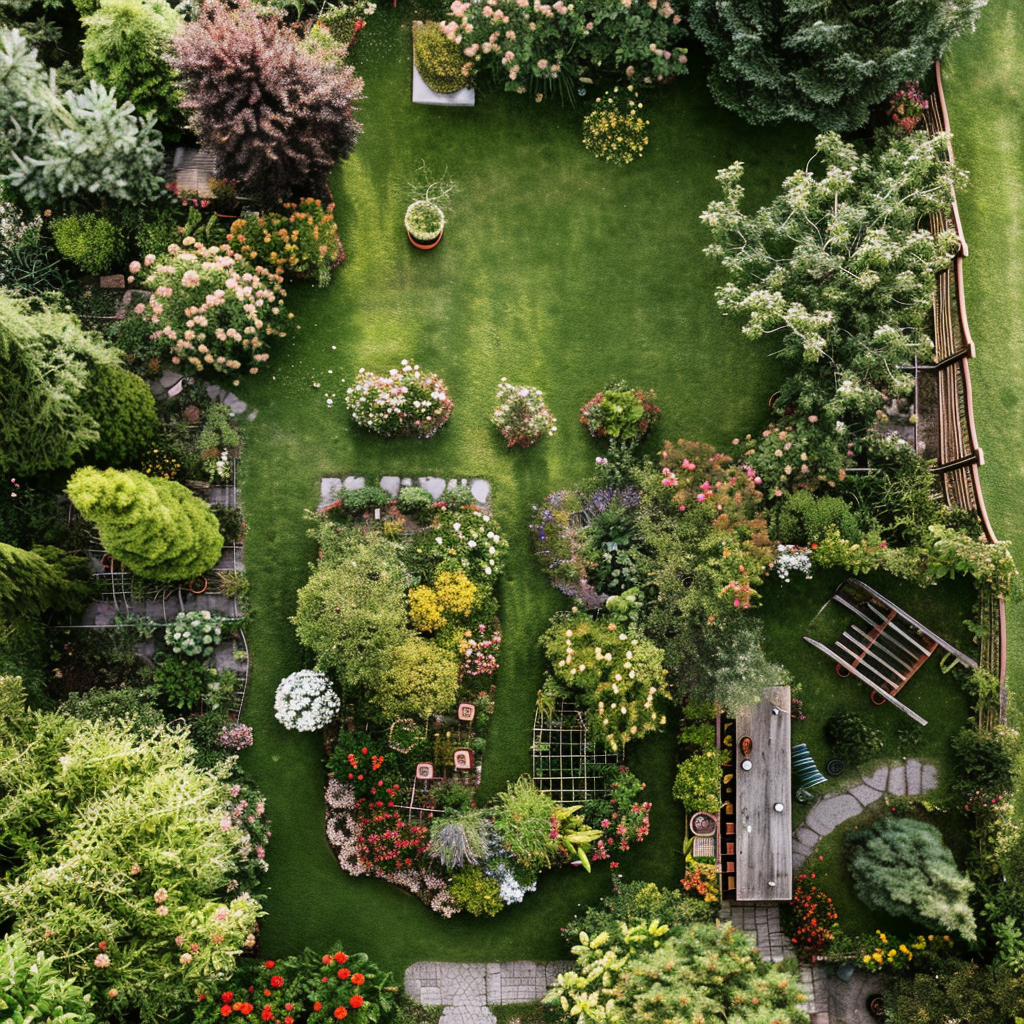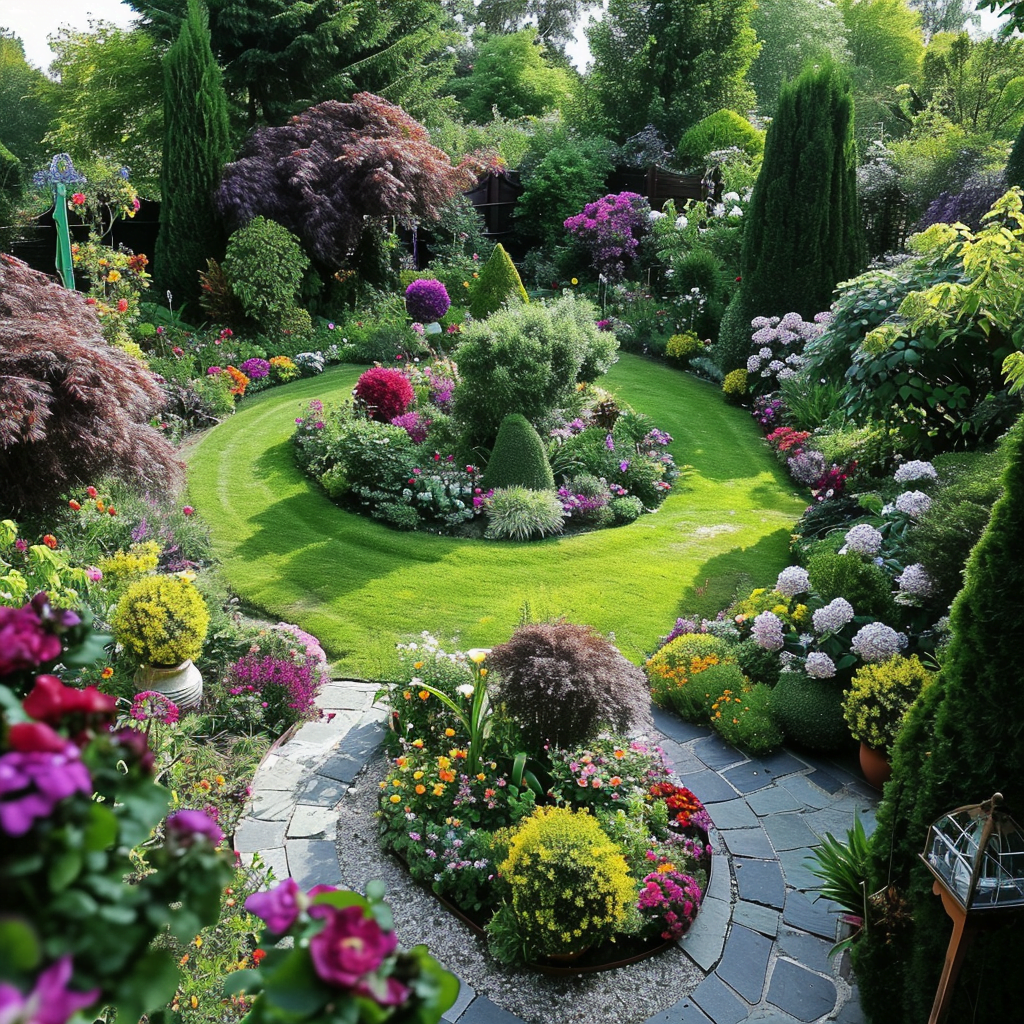If you’ve ever dreamt of having a lush and thriving garden right in your own backyard, then look no further! This article “How do you make a perfect garden” is packed with expert tips and tricks to help you create the perfect garden. Whether you’re a seasoned gardener or a beginner with a green thumb, these tips will provide you with the guidance and inspiration you need to transform your outdoor space into a flourishing oasis. From selecting the right plants to nurturing them with the proper care, you’re about to embark on a horticultural journey that will bring beauty, tranquility, and a sense of accomplishment to your life. Get ready to dig in and let nature work its magic!
Choosing the Right Location
Consider Sunlight Exposure
When choosing the location for your garden, it is important to consider the amount of sunlight exposure it will receive. Most plants require at least six hours of direct sunlight per day to thrive. Take note of the sun’s path throughout the day, as nearby buildings or trees could cast shade on your garden. By selecting a spot with adequate sunlight, you are setting your garden up for success.
Evaluate Soil Quality
The quality of the soil in your chosen location is crucial for the health and growth of your plants. Conduct a soil test to determine its pH levels and nutrient content. Different plants have varying soil requirements, so it is essential to choose a location with soil that is suitable for the plants you wish to grow. If the soil quality is not ideal, you can improve it by adding organic matter, such as compost or aged manure.
Assess Drainage
Proper drainage is essential for preventing waterlogged soil and root rot. Before setting up your garden, assess the drainage capabilities of the chosen location. Ensure that the area does not get waterlogged easily and that excess water can drain away. If necessary, you can improve drainage by incorporating organic matter or creating raised beds. Good drainage will help your plants thrive and avoid any water-related issues.
Determine Space Availability
Consider the amount of space available for your garden. Whether you have a small balcony or a spacious backyard, make sure to utilize the available space efficiently. Take into account the size and spread of the plants you intend to grow. Allow enough space between plants to ensure proper air circulation and prevent overcrowding. Adequate space also allows for easier access during maintenance tasks such as pruning and harvesting.
Deciding on Garden Design
Consider Garden Style
When planning your garden design, consider the style you want to achieve. Do you prefer a formal and structured garden, or a more relaxed and natural look? Research various garden styles, such as Japanese gardens, cottage gardens, or modern landscapes, and choose the one that resonates with you. The garden style will influence the layout, choice of plants, and overall ambiance of your garden.
Plan for Pathways
Pathways are not only functional but also add aesthetic value to your garden. Plan for pathways that guide visitors through your garden and provide access to different areas. Consider using materials such as gravel, stone, or mulch for pathways, depending on the style of your garden. Ensure the pathways are wide enough for comfortable walking, and include curves or focal points to add interest.
Include Seating Areas
Incorporating seating areas in your garden allows you to relax and enjoy the beauty of your surroundings. Whether it’s a simple bench, a cozy reading nook, or a patio with outdoor furniture, make sure to include seating areas that suit your lifestyle and desired garden experience. Take into account the views and focal points within your garden when positioning seating areas to maximize enjoyment.
Incorporate Water Features
Water features can enhance the tranquility and visual appeal of your garden. Consider adding a pond, waterfall, or fountain to create a soothing ambiance. The sound of flowing water can mask unwanted noise and attract birds and other wildlife. When incorporating water features, ensure they are proportionate to the size of your garden and aligned with your chosen garden style.
Selecting the Right Plants
Research Climate Compatibility
Understanding the climate of your region is crucial for selecting plants that will thrive in your garden. Research the hardiness zones specific to your area and choose plants that are suitable for those conditions. Consider factors such as average temperature, humidity, and frost dates. By selecting climate-compatible plants, you are ensuring their long-term survival and minimizing the need for excessive maintenance.
Consider Height and Spread
When choosing plants for your garden, it is important to consider their eventual height and spread. This will prevent overcrowding and ensure that each plant has sufficient space to grow and flourish. Consider the mature size of each plant and allow enough room for their natural development. Tall plants can create a vertical element, while spreading plants can provide groundcover and fill gaps in your garden.
Choose Plants to Attract Beneficial Insects
Incorporating plants that attract beneficial insects can help control harmful pests and promote overall garden health. Research which plants are known to attract pollinators such as bees and butterflies, as well as predatory insects that feed on garden pests. Consider including flowers with nectar and pollen-rich blooms, as well as plants that provide shelter and habitat for beneficial insects.
Include a Variety of Colors and Textures
A visually pleasing garden often incorporates a variety of colors and textures. When selecting plants, consider their foliage, flowers, and overall aesthetic appeal. Choose plants with different bloom times to ensure that your garden has color throughout the year. Combine plants with different leaf shapes and textures to create visual interest and contrast. By including a diverse range of colors and textures, you can create a garden that is a feast for the eyes.
Preparing the Soil
Remove Weeds and Unwanted Vegetation
Before planting, it is crucial to clear the area of weeds and unwanted vegetation. Weeds can compete with your plants for resources and harbor pests and diseases. Remove weeds by pulling them out or using appropriate tools such as a hoe or weed trimmer. It is important to remove the entire root system to prevent regrowth.
Amend the Soil with Organic Matter
Adding organic matter to your soil is an important step in preparing it for planting. Organic matter improves soil structure, enhances nutrient retention, and promotes beneficial microbial activity. Consider incorporating compost, well-rotted manure, or leaf mulch into your soil. Spread a layer of organic matter over the top of the soil and mix it in thoroughly using a garden fork or tiller.
Check Soil pH Levels
Soil pH affects the availability of nutrients to your plants. Most plants prefer slightly acidic to neutral soil, with a pH range of 6.0 to 7.0. Test your soil pH using a soil testing kit or by sending a sample to a laboratory for analysis. If the pH is outside the desired range, you can adjust it by adding appropriate soil amendments, such as lime to raise pH or sulfur to lower pH.
Improve Drainage if Necessary
If your soil has poor drainage, it is important to improve it before planting. Excessively moist soil can lead to root rot and other issues. To improve drainage, consider building raised beds, incorporating organic matter, or adding coarse sand or perlite to the soil. Ensure that water can drain away from plant roots effectively, preventing waterlogged conditions.

Planting Techniques
Space Plants Appropriately
Proper spacing is crucial for the health and growth of your plants. Follow the recommended spacing guidelines for each plant to allow for adequate airflow and light penetration. Overcrowded plants are more prone to diseases and competition for resources. Take into consideration the mature size of each plant and provide enough space to accommodate their growth.
Follow Planting Depth Guidelines
Planting depth varies depending on the type of plant. Follow the recommended planting depth for each species to ensure proper establishment. Some plants, such as bulbs or seedlings, need to be planted at specific depths to promote healthy root development. When planting, gently firm the soil around the roots to eliminate air pockets and ensure good soil-to-root contact.
Water Plants After Planting
After planting, it is crucial to water your newly placed plants thoroughly. This helps settle the soil around the roots and provides initial hydration. Ensure that water reaches the root zone by watering at the base of the plant, rather than sprinkling water on the leaves. Water deeply but avoid overwatering, as excessive moisture can lead to root rot.
Mulch Around Plants
Mulching around plants provides numerous benefits. Mulch helps conserve soil moisture, suppresses weed growth, and regulates soil temperature. Apply a layer of organic mulch, such as wood chips, straw, or shredded bark, around your plants. Avoid placing mulch directly against the stems or trunks of plants to prevent rot and pests. Replenish mulch as needed to maintain the desired depth.
Providing Adequate Watering
Understand Plant Water Needs
Different plants have different water requirements. It is crucial to understand the specific needs of your plants to ensure you provide adequate water. Some plants, such as succulents, are drought-tolerant and prefer infrequent watering, while others, like vegetables, require consistent moisture. Research the water needs of each plant species and adjust your watering schedule accordingly.
Use Proper Irrigation Methods
Using appropriate irrigation methods helps deliver water effectively to your plants. Consider using drip irrigation systems, soaker hoses, or watering cans to target the root zone while minimizing water loss due to evaporation. Avoid overhead watering, as it can increase the risk of diseases and waste water. Irrigate early in the morning or late in the evening to reduce water loss through evaporation.
Consider Water Conservation Techniques
Conserving water in your garden not only benefits the environment but also saves on water bills. Implement water conservation techniques such as collecting rainwater in barrels or using greywater from your household to irrigate your plants. Group plants with similar water requirements together to avoid overwatering one area. Applying a layer of mulch also helps reduce evaporation and retain soil moisture.
Install an Automated Watering System
If you have a large garden or struggle to maintain a consistent watering schedule, consider installing an automated watering system. This can be a convenient and efficient way to ensure your plants receive the right amount of water at the right time. There are various options available, including timers, drip irrigation systems, and smart controllers that adjust watering based on weather conditions.
Implementing a Regular Maintenance Routine
Prune and Trim Plants Regularly
Regular pruning and trimming are essential for maintaining the health and appearance of your plants. Remove dead, diseased, or damaged branches to prevent the spread of diseases and increase airflow. Prune to shape plants and promote healthy growth. Different plants have different pruning needs, so research specific techniques for each species. Regularly monitor your plants for any signs of pests or diseases as part of your maintenance routine.
Monitor and Control Pests and Diseases
Pests and diseases can cause significant damage to your garden if not promptly addressed. Regularly monitor your plants for signs of pests such as aphids, snails, or caterpillars. Identify the pests and employ appropriate control methods such as handpicking, applying organic insecticides, or introducing natural predators. Similarly, monitor for signs of diseases like powdery mildew or leaf spot, and take appropriate action such as removing affected plant parts or using disease-resistant varieties.
Fertilize Plants as Needed
Regular fertilization ensures that your plants have the necessary nutrients for healthy growth and abundant blooms. Choose a fertilizer appropriate for the types of plants in your garden and follow the recommended application rates. Avoid overfertilization, as it can lead to excessive vegetative growth or nutrient imbalances. Consider using organic fertilizers, such as compost or compost tea, to improve soil fertility naturally.
Remove Dead or Diseased Plant Matter
Clearing dead or diseased plant matter from your garden is essential to prevent the spread of diseases and maintain a clean environment. Remove fallen leaves, twigs, and flowers regularly. Dispose of any diseased plant material by securely bagging and discarding it to prevent further infections. Cleaning up your garden also helps improve overall aesthetics and reduces hiding places for pests.

Enhancing Garden Health and Growth
Encourage Beneficial Wildlife
Attracting beneficial wildlife to your garden can provide natural pest control and contribute to overall garden health. Plant flowers that attract pollinators, such as bees and butterflies, by providing nectar and pollen sources. Incorporate plants that provide shelter and food for birds, beneficial insects, and amphibians. Consider incorporating bird feeders, butterfly houses, and insect hotels to further encourage wildlife to visit and establish themselves within your garden.
Create a Compost System
Composting is an excellent way to recycle organic waste and create nutrient-rich soil amendments for your garden. Establish a compost system by collecting kitchen scraps, yard waste, and other organic materials. Layer these materials in a compost bin or pile, ensuring a balance between green (nitrogen-rich) and brown (carbon-rich) materials. Turn the pile regularly to promote decomposition, and in time, you will have homemade compost to enrich your garden soil.
Rotate Crops and Plants
To maintain soil health and reduce the risk of diseases and pests, practice crop rotation in your vegetable garden. Planting different crops in different locations each year helps prevent the buildup of pests and diseases specific to certain plant families. Similarly, consider rotating perennial plants every few years to maintain soil fertility and prevent nutrient depletion. Crop rotation is an effective long-term strategy for maintaining a healthy garden ecosystem.
Implement Companion Planting
Companion planting involves strategically selecting plants that benefit one another when grown together. Some plants have natural properties that repel pests or attract beneficial insects. For example, planting marigolds alongside vegetables can help repel harmful nematodes. Research companion planting combinations to find plants that complement each other in terms of pest control, nutrient exchange, or growth promotion.
Adding Personal Touches
Incorporate Garden Decorations
Adding personal touches to your garden can enhance its beauty and reflect your unique style. Consider incorporating garden decorations such as statues, trellises, or garden art. Place decorative elements strategically to create focal points or guide the eye through the garden. Choose decor that complements your chosen garden style and aligns with your personal taste.
Include Fragrant Plants
Fragrance adds another dimension to your garden, creating a sensory experience. Include fragrant plants such as lavender, roses, or jasmine to fill the air with delightful scents. Consider planting them near seating areas or pathways to enjoy their fragrance up close. Incorporate a variety of flowering plants that bloom at different times to ensure a continuous olfactory delight throughout the gardening season.
Plant Fruits and Vegetables for Edible Harvests
Growing your own fruits and vegetables provides the opportunity to enjoy fresh and flavorful produce directly from your garden. Research the types of fruits and vegetables that thrive in your climate and follow specific planting and care instructions. Consider the space available and select crops that fit your garden size. Whether it’s a small herb garden or a full-fledged vegetable patch, growing your own edible harvests can be a rewarding and delicious experience.
Create a Relaxation Area
Make your garden a place of relaxation and rejuvenation by creating a dedicated area for unwinding. Arrange outdoor furniture, comfortable seating, or hammocks in a serene corner of your garden. Add shade structures, such as pergolas or umbrellas, to provide protection from the sun. Consider incorporating elements like wind chimes, water features, or soft lighting to enhance the tranquil atmosphere. Having a relaxation area allows you to escape the busyness of daily life and enjoy the peace and beauty of your garden sanctuary.

Seeking Professional Help if Needed
Consult with a Landscape Designer
If you have a specific vision for your garden but need assistance in bringing it to life, consider consulting with a landscape designer. Landscape designers have expertise in garden design principles, plant selection, and creating outdoor spaces that suit individual preferences. They can work with you to develop a comprehensive plan and provide guidance on executing your vision.
Hire a Gardener or Landscaping Service
If you are short on time or do not have the knowledge and skills necessary for maintaining your garden, hiring a professional gardener or landscaping service can be beneficial. They can assist with routine maintenance tasks such as pruning, fertilizing, and irrigation. A professional gardener can also provide advice on plant care and help diagnose and treat any pest or disease issues that may arise.
Attend Gardening Workshops or Classes
To expand your gardening knowledge and learn new techniques and tips, consider attending gardening workshops or classes. Many local nurseries, botanical gardens, and community organizations offer educational programs on various gardening topics. These workshops provide opportunities to learn from experienced gardeners and connect with other gardening enthusiasts in your community.
Join a Gardening Community
Joining a gardening community or club allows you to connect with like-minded individuals who share your passion for gardening. These communities often organize events, plant swaps, and garden tours, providing opportunities to learn from fellow gardeners and gain inspiration for your own garden. Engaging with a gardening community allows you to tap into a wealth of knowledge and experience and create lasting friendships with fellow green thumbs.
Creating the perfect garden requires careful planning, thoughtful consideration, and ongoing maintenance. By choosing the right location, designing your garden layout, selecting suitable plants, preparing the soil, implementing proper planting techniques, providing adequate watering, maintaining the garden regularly, enhancing garden health, adding personal touches, and seeking professional help when needed, you can create a beautiful and thriving garden that brings joy and tranquility to your outdoor space
